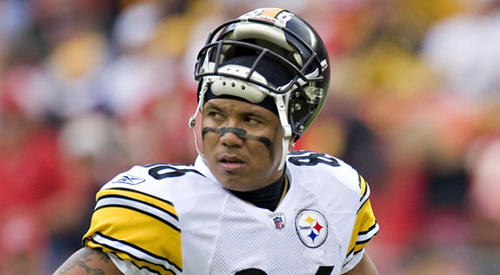
Asian population critically underrepresented in NFL
While the NFL received its first “A” grade this past year for racial hiring practices by The Institute for Diversity and Ethics in Sport, there is always still room for improvement.
According to the University of Central Florida-based group in their 2010 Racial and Gender Report Card, white and African-American players combined to make up 97 percent of the league. That left only three percent for any other races.
It seems the demographic of Asians (and Asian-Americans) isn’t strongly pursued by the NFL, which is odd considering the size of the Asian market. Other leagues have had notable success on those fronts, such as the NBA with Yao Ming, its Chinese basketball ambassador. MLB also had the ability to bring already-famous players like Ichiro Suzuki and Daisuke Matsuzaka to their league and draw international fans of those athletes to follow their games. It’s not just about marketing, either; that’s a substantial demographic of potentially talented athletes the league doesn’t seem to be fully tapping.
Out of the few Asian-Americans that compete in the NFL, the most prominent one is arguably Hines Ward. Ward was born in Seoul, South Korea to an African-American father and Korean mother. After his family moved to the United States, Ward lived in Georgia and played for the University of Georgia, being drafted by the Steelers in 1998.
Ward’s career in Pittsburgh has placed him as one of the greatest wide receivers in Steelers history, holding records for receptions, receiving yards and receiving touchdowns, and winning the team’s MVP award three times. Listed at an even 6’0″ tall, Ward possesses only average height for a wide receiver but uses his 205-pound build to set blocks that have made him notorious for his hard-hitting play within the NFL.
[php snippet=1]
Bam Morris, founder of Blitzburgh Blog, remembers watching Ward play quarterback at the 1995 Peach Bowl against Virginia. He wasn’t sure what to expect from Ward when he was drafted by Pittsburgh, but Morris sees him now as one the greatest receivers in Steelers history who represents the city well with his personality and demeanor.
“He’s been undersized and slow for nearly his whole career, yet nobody in the league is tougher,” Morris said. “His work ethic is unmatched as well. Hines Ward is the city of Pittsburgh personified on the football field. He’s the little, scrappy guy who has been told he’s no good for his whole life, yet he takes tremendous pride in his work and character and has become something great.”
Craig Gottschalk of Nice Pick, Cowher said the relatively low numbers of Asian-Americans in the NFL, may be due to the typical physiques professional teams look for. With the average football player being 6’0″ tall and 210 pounds, Gottschalk says that many (but not all) Asian-Americans are at a disadvantage. Beyond physical build, there’s also a significant issue with their participation rates in the sport.
“You need to look at programs at an early age,” Gottschalk said. “Are there youth who are of Asian-American races that are participating in football? I think a lifelong interest and pursuit of football as a career starts at a young age. If Asian-Americans aren’t participating at that time, then it may be ‘late’ for them to gain interest or succeed in a program as they get older.”
Virginia-born Ed Wang has only been in the NFL for one season, but he has already made history. When the offensive tackle was drafted out of Virginia Tech by the Buffalo Bills in the fifth round in 2010, he broke new boundaries by becoming the first fully Chinese player in the NFL.
Although Wang’s first season with Buffalo didn’t result in a lot of playing time, there is still a great opportunity for him in the future. Demetrius Bell has the starting left tackle job over Wang right now, but while although he has most of his football experience there, Wang has also played other positions. He started his career at Virginia Tech playing some sets at tight end and was also used as a right tackle for the Hokies, showing knowledge of both positions.
We’ll have to see if Wang can make the most out of his career and be known as well as Norman Kwong. Kwong, the first Chinese-Canadian to play on a professional Canadian football team, had a legendary playing career at fullback with the Calgary Stampeders and Edmonton Eskimos in the 1940s and 1950s. He went on to be the Stampeders’ president and general manager, was a part owner of the Calgary Flames and was lieutenant governor of Alberta from 2005 to 2010.
Could the NFL use more players like Wang and Ward with Asian heritage? Well, despite the league’s efforts to promote their product in other countries, such as the International Series and sites for China, Japan and other areas, their massively popular sport isn’t as dominant worldwide as it is in the U.S. Yes, this past Super Bowl broke records with an estimated 111 million people watching according to the Nielsen Co., but that only counts for American television viewing.
What about areas outside of the United States? The estimated total viewing for Super Bowl XLV was 162.9 million, so by doing the math, roughly 52 million out of the rest of the world tuned in for the big game. Considering the number of countries that broadcast this year’s Super Bowl – including China, Australia, Germany, France and more – that number could be much greater. A more diverse population of players might not be the only way to increase the game’s worldwide appeal, but it certainly wouldn’t hurt.
[php snippet=1]

